-
 bitcoin
bitcoin $109667.069529 USD
-3.03% -
 ethereum
ethereum $3936.685804 USD
-4.07% -
 tether
tether $1.000493 USD
0.01% -
 xrp
xrp $2.771823 USD
-4.74% -
 bnb
bnb $957.805027 USD
-5.34% -
 solana
solana $196.735100 USD
-6.68% -
 usd-coin
usd-coin $0.999727 USD
-0.01% -
 dogecoin
dogecoin $0.227355 USD
-5.12% -
 tron
tron $0.335205 USD
-0.81% -
 cardano
cardano $0.779256 USD
-3.59% -
 ethena-usde
ethena-usde $0.999900 USD
-0.06% -
 hyperliquid
hyperliquid $42.492095 USD
-6.61% -
 chainlink
chainlink $20.501853 USD
-4.34% -
 avalanche
avalanche $28.952606 USD
-11.21% -
 stellar
stellar $0.356038 USD
-3.93%
What are play-to-earn games?
Play-to-earn games use blockchain to let players earn real-world value through NFTs and crypto, combining gameplay with tangible rewards.
Sep 16, 2025 at 08:00 pm
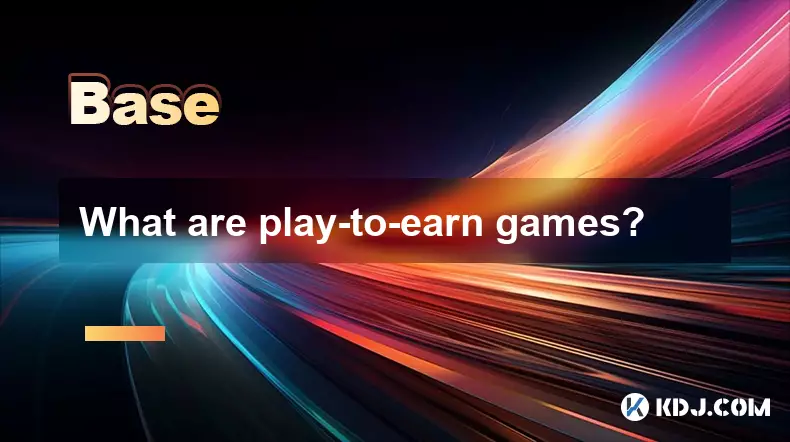
What Are Play-to-Earn Games?
1. Play-to-earn games are blockchain-based video games that allow players to earn cryptocurrency or non-fungible tokens (NFTs) by participating in the game environment. Unlike traditional games where rewards are purely virtual and confined within the game, play-to-earn models offer tangible digital assets that can be traded or sold.
2. These games typically operate on decentralized networks such as Ethereum, Binance Smart Chain, or Polygon, leveraging smart contracts to manage in-game assets and transactions. Ownership of characters, items, or land is recorded on the blockchain, giving players true digital ownership.
3. Players can earn tokens by completing quests, winning battles, breeding digital creatures, or contributing to the game’s ecosystem. These earned tokens often have real-world value and can be exchanged on cryptocurrency exchanges.
4. The economic model of play-to-earn games often resembles a decentralized economy where supply, demand, and player activity influence the value of in-game assets. This has led to the rise of 'scholarships,' where experienced players lend their NFTs to others in exchange for a share of earnings.
5. While the concept empowers players financially, especially in developing regions, it also introduces risks such as market volatility, unsustainable token inflation, and reliance on continuous player growth to maintain value.
How Do Blockchain Mechanics Enable Play-to-Earn?
1. Blockchain technology ensures transparency and immutability of in-game transactions. Every action that results in asset transfer or creation is recorded on a public ledger, preventing fraud and duplication.
2. Smart contracts automate reward distribution based on predefined rules. For example, defeating a boss might trigger a contract to send a specific NFT to the player’s wallet without requiring developer intervention.
3. NFTs represent unique, verifiable digital items such as avatars, weapons, or virtual real estate. Their scarcity and authenticity are guaranteed by the blockchain, making them valuable and tradable across platforms.
4. Interoperability is a growing focus, allowing assets earned in one game to be used in another. This cross-game utility enhances the perceived value of digital ownership and strengthens the broader metaverse economy.
5. Decentralized governance tokens let players vote on game updates or economic policies, giving the community influence over the game’s direction and fostering a sense of ownership beyond just assets.
Popular Examples in the Play-to-Earn Ecosystem
1. Axie Infinity is one of the most recognized play-to-earn games, where players collect, breed, and battle fantasy creatures called Axies. Each Axie is an NFT, and players earn Smooth Love Potion (SLP) and Axie Infinity Tokens (AXS) through gameplay.
2. The Sandbox offers a virtual world where users can buy land as NFTs, build experiences, and monetize their creations. It uses the SAND token for transactions and governance, attracting brands and creators alike.
3. Illuvium features an open-world RPG set on a sci-fi planet, where players capture creatures called Illuvials. The game is built on Immutable X, a Layer-2 solution for Ethereum, offering gas-free transactions and high-quality graphics.
4. Splinterlands is a fast-paced card game where players earn cryptocurrency by battling others. It runs on the Hive blockchain and emphasizes accessibility, allowing players to start with minimal upfront cost.
5. Gods Unchained is a competitive trading card game where each card is an NFT. Players can earn cards through matches and sell them on marketplaces, blending esports mechanics with blockchain ownership.
Challenges Facing Play-to-Earn Adoption
1. High entry costs can deter new players. Many games require purchasing NFTs to begin, creating a financial barrier that contradicts the inclusive promise of decentralized gaming.
2. Tokenomics instability is a major concern. If reward issuance outpaces demand, token value can collapse, undermining player incentives and causing ecosystem decay.
3. Scalability issues arise when games grow rapidly. Congestion on networks like Ethereum can lead to slow transactions and high fees, degrading user experience.
4. Regulatory uncertainty looms over the classification of in-game tokens. Authorities in various countries are examining whether these assets qualify as securities, which could impose compliance burdens.
5. Game quality and long-term engagement remain critical. Some early play-to-earn titles prioritized earnings over fun, leading to player burnout and declining activity once financial incentives wane.
Frequently Asked Questions
What distinguishes play-to-earn from free-to-play games?Play-to-earn games provide players with blockchain-backed assets and tokens that hold external value, whereas free-to-play games offer in-game rewards that cannot be monetized outside the game environment.
Can players lose money in play-to-earn games?Yes. If a game’s token value drops or NFT prices decline, players who invested upfront may not recoup their costs. Market fluctuations and project failures pose real financial risks.
Are play-to-earn games only about making money?While earning is a major draw, successful games integrate engaging gameplay. Titles that balance fun with economic incentives tend to retain players longer and build sustainable communities.
How do players withdraw earnings from play-to-earn games?Earnings in the form of cryptocurrency or NFTs are stored in a digital wallet. Players can transfer these assets to exchanges and convert them into fiat currency or other digital assets.
Disclaimer:info@kdj.com
The information provided is not trading advice. kdj.com does not assume any responsibility for any investments made based on the information provided in this article. Cryptocurrencies are highly volatile and it is highly recommended that you invest with caution after thorough research!
If you believe that the content used on this website infringes your copyright, please contact us immediately (info@kdj.com) and we will delete it promptly.
- XRP Price: October Rally on the Horizon After September Consolidation?
- 2025-09-26 16:25:13
- Bitcoin Price Wobbles: Investors Buy the Dip as Powell's Words Stir Uncertainty
- 2025-09-26 16:25:13
- Kaspa Price, Smart Contracts, and the 2026 Forecast: A New York Minute
- 2025-09-26 16:30:01
- Bitwise, Hyperliquid ETF, and HYPE Token: What's the Deal?
- 2025-09-26 16:45:14
- B HODL, Bitcoin, and Treasury Purchases: The New Institutional Playbook
- 2025-09-26 17:05:15
- Cloudflare, Stablecoins, and AI Agents: A New Era of Automated Finance
- 2025-09-26 16:45:14
Related knowledge
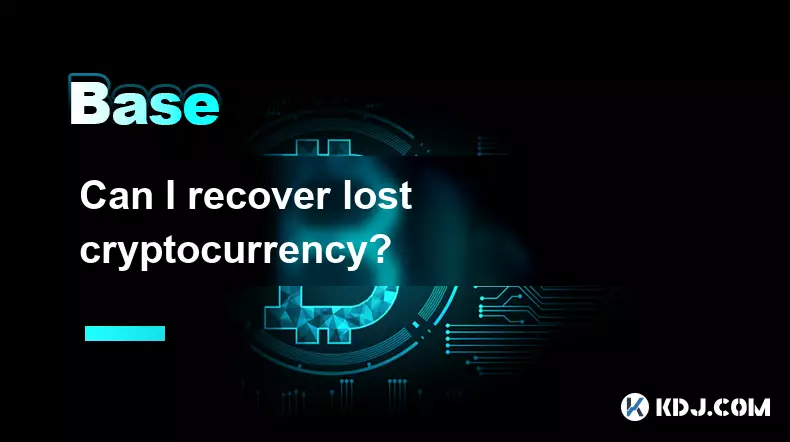
Can I recover lost cryptocurrency?
Sep 25,2025 at 08:18am
Understanding the Nature of Cryptocurrency Loss1. Cryptocurrency operates on decentralized networks, meaning there is no central authority to reverse ...
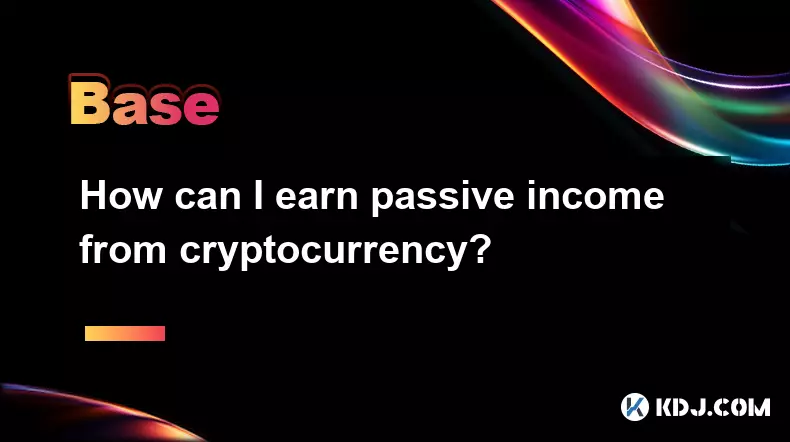
How can I earn passive income from cryptocurrency?
Sep 23,2025 at 10:18am
Staking Cryptocurrencies for Regular Returns1. Many blockchain networks operate on a proof-of-stake (PoS) consensus mechanism, allowing users to earn ...

What are gas fees in cryptocurrency transactions?
Sep 26,2025 at 02:00am
Understanding Gas Fees in Blockchain Transactions1. Gas fees are payments made by users to compensate for the computing energy required to process and...
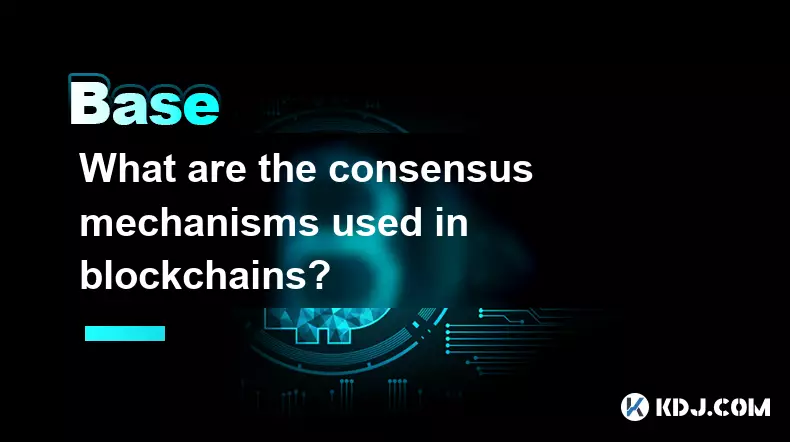
What are the consensus mechanisms used in blockchains?
Sep 24,2025 at 10:00am
Proof of Work and Its Role in Blockchain Security1. Proof of Work (PoW) is one of the earliest consensus mechanisms, first implemented by Bitcoin. Min...
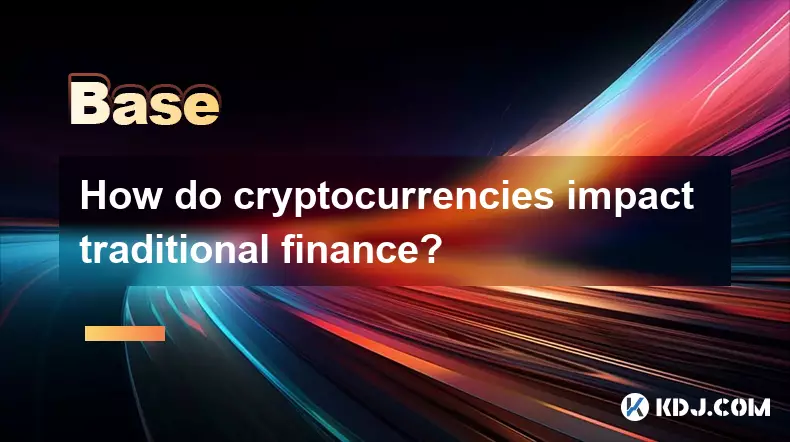
How do cryptocurrencies impact traditional finance?
Sep 26,2025 at 05:54am
Disruption of Centralized Banking Systems1. Cryptocurrencies challenge the authority of central banks by offering decentralized alternatives to fiat c...

Is there a finite supply of Bitcoin?
Sep 23,2025 at 06:00am
Bitcoin's Fixed Supply Mechanism1. Bitcoin was designed with a hard cap of 21 million coins, making its supply finite and predictable. This limit is h...

Can I recover lost cryptocurrency?
Sep 25,2025 at 08:18am
Understanding the Nature of Cryptocurrency Loss1. Cryptocurrency operates on decentralized networks, meaning there is no central authority to reverse ...

How can I earn passive income from cryptocurrency?
Sep 23,2025 at 10:18am
Staking Cryptocurrencies for Regular Returns1. Many blockchain networks operate on a proof-of-stake (PoS) consensus mechanism, allowing users to earn ...

What are gas fees in cryptocurrency transactions?
Sep 26,2025 at 02:00am
Understanding Gas Fees in Blockchain Transactions1. Gas fees are payments made by users to compensate for the computing energy required to process and...

What are the consensus mechanisms used in blockchains?
Sep 24,2025 at 10:00am
Proof of Work and Its Role in Blockchain Security1. Proof of Work (PoW) is one of the earliest consensus mechanisms, first implemented by Bitcoin. Min...

How do cryptocurrencies impact traditional finance?
Sep 26,2025 at 05:54am
Disruption of Centralized Banking Systems1. Cryptocurrencies challenge the authority of central banks by offering decentralized alternatives to fiat c...

Is there a finite supply of Bitcoin?
Sep 23,2025 at 06:00am
Bitcoin's Fixed Supply Mechanism1. Bitcoin was designed with a hard cap of 21 million coins, making its supply finite and predictable. This limit is h...
See all articles










































































